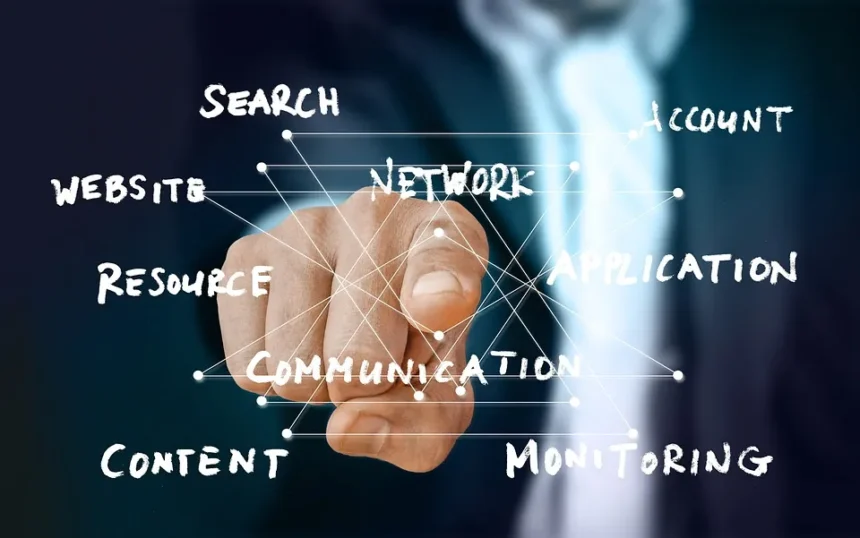The modern workplace thrives on real-time collaboration, where teams can communicate, share ideas, work on projects, and manage tasks simultaneously, no matter where they are located. In 2023, advancements in technology have made real-time collaboration easier and more seamless than ever before. Whether it’s working on a shared document, discussing project details in a video conference, or managing tasks on a collaborative board, real-time tools have transformed how teams work together. These platforms not only enhance productivity but also ensure that teams remain aligned, even in remote or hybrid environments.
The Importance of Real-Time Collaboration
In a world where remote work and cross-functional teams are the norm, real-time collaboration is a crucial component of success. It allows teams to work together more efficiently by enabling instant communication and the ability to work on the same tasks or documents simultaneously. Key benefits include:
- Faster decision-making: With real-time communication and instant access to information, teams can make quick, informed decisions.
- Enhanced productivity: Collaboration in real-time reduces bottlenecks, improves coordination, and ensures that tasks move forward without delays.
- Improved teamwork: By allowing teams to work together in a single, shared environment, real-time tools foster better collaboration, creativity, and problem-solving.
- Increased flexibility: Real-time collaboration platforms empower teams to work from anywhere, breaking down geographic barriers and making it easier to include everyone in the process.
Key Features of the Best Real-Time Collaboration Tools in 2023
The top real-time collaboration tools in 2023 are designed to meet the evolving needs of modern teams, integrating communication, project management, file sharing, and other essential functions. Here are the key features that make these tools stand out:
- Real-Time Messaging: Instant communication is the foundation of real-time collaboration. Tools like Slack and Microsoft Teams allow team members to exchange messages instantly, whether through direct chats or group channels. These platforms support the use of mentions, threads, and notifications to ensure that communication is focused and effective, and conversations are organized around specific projects or topics.
- Video Conferencing and Screen Sharing: The ability to connect face-to-face, even virtually, is critical for collaboration. Tools like Zoom, Google Meet, and Microsoft Teams offer high-quality video conferencing capabilities, as well as screen sharing, virtual whiteboards, and breakout rooms to facilitate collaboration during meetings. These features allow teams to discuss ideas, present work, and make decisions in real-time.
- Collaborative Document Editing: Real-time document collaboration is one of the most powerful features of modern tools. Platforms like Google Workspace and Microsoft 365 allow multiple users to work on documents, spreadsheets, and presentations simultaneously. Changes are visible instantly, ensuring that all contributors are always working on the most up-to-date version of a file. This real-time editing capability reduces confusion and improves efficiency, especially for teams working on complex projects.
- Task and Project Management: Effective collaboration requires more than just communication—it involves tracking tasks and managing projects in real-time. Tools like Asana, Trello, and Monday.com provide visual boards, task assignments, and project timelines that update in real-time. Team members can track their progress, assign tasks, set deadlines, and receive updates as work moves forward. This ensures transparency and keeps everyone on the same page.
- File Sharing and Cloud Storage: Seamless file sharing is essential for real-time collaboration, especially for teams working on documents or creative assets. Cloud storage platforms like Google Drive, Dropbox, and OneDrive offer real-time file sharing and editing features, allowing team members to access, share, and collaborate on files from anywhere. These platforms integrate with other collaboration tools, making it easy to share files directly in a messaging app or during a video call.
- Integration with Other Tools: Many teams use a variety of tools to manage different aspects of their work, from customer relations (CRMs) to design and development tools. The best real-time collaboration platforms in 2023 offer integrations with third-party apps such as Salesforce, Zoom, Trello, and Jira, ensuring that teams can streamline their workflow and access all necessary tools within a single platform. This reduces the need for switching between apps and improves overall productivity.
- Real-Time Notifications and Alerts: To ensure that no important update goes unnoticed, real-time collaboration platforms offer instant notifications and alerts. Whether it’s a new task assignment, a comment on a document, or a message from a team member, notifications help keep everyone informed and reduce the likelihood of missed information.
- Cross-Device Accessibility: Real-time collaboration tools are accessible across multiple devices, ensuring that team members can collaborate whether they’re working on a desktop, laptop, tablet, or smartphone. Cross-platform compatibility is crucial for remote and hybrid teams, enabling them to stay connected and productive from any location.
Best Real-Time Collaboration Tools for 2023
Here’s a look at some of the top real-time collaboration tools that have made collaboration easier for teams in 2023:
- Microsoft Teams
Microsoft Teams is a leading real-time collaboration platform that integrates messaging, video conferencing, and project management within a single interface. It is part of the Microsoft 365 suite, allowing teams to work on Word documents, Excel sheets, and PowerPoint presentations in real-time. Teams also support file sharing through OneDrive, task management, and integrations with a wide range of third-party apps, making it a comprehensive solution for both communication and collaboration. - Slack
Slack is known for its efficient, channel-based messaging system, which organizes conversations around projects, topics, or departments. With real-time messaging, file sharing, and integrations with thousands of third-party tools, Slack is a central hub for team collaboration. Its integration with tools like Google Workspace, Zoom, and Asana allows teams to perform tasks and access information without leaving the platform, ensuring that collaboration happens seamlessly. - Google Workspace (formerly G Suite)
Google Workspace remains one of the most popular platforms for real-time collaboration. Google Docs, Sheets, and Slides enable real-time document editing, while Google Meet offers video conferencing with integration across the suite. Google Drive provides cloud storage for easy file sharing and collaboration, while Google Chat facilitates real-time messaging. The tight integration between these tools ensures that teams can communicate and collaborate without friction. - Zoom
Although Zoom is best known for its video conferencing capabilities, it also provides additional collaboration features through Zoom Chat and Zoom Whiteboard. Zoom’s video calls, screen sharing, and virtual whiteboards make it easy for teams to collaborate in real-time, while its integrations with Slack, Microsoft Teams, and Google Workspace ensure that communication remains streamlined. - Asana
Asana is a powerful project management tool that supports real-time collaboration by allowing teams to create tasks, set deadlines, assign responsibilities, and track progress visually through boards and timelines. Its real-time updates and collaboration features ensure that teams remain aligned, while integrations with tools like Slack, Zoom, and Google Drive enhance its utility as part of a broader workflow. - Trello
Trello’s simple, card-based interface makes it easy for teams to manage tasks and projects in real-time. Users can create boards for specific projects, assign tasks, add due dates, and track progress visually. With its real-time updates and collaboration features, Trello is ideal for teams that need a straightforward yet effective way to manage workflows. It also integrates with other collaboration tools like Slack, Zoom, and Dropbox. - Dropbox
Dropbox has evolved into a comprehensive platform for real-time collaboration, offering cloud storage, file sharing, and tools like Dropbox Paper, which allows teams to collaborate on documents in real-time. Dropbox’s integration with tools like Slack and Zoom ensures that file sharing and collaboration happen seamlessly within the workflow.
Benefits of Real-Time Collaboration Tools in 2023
Real-time collaboration tools offer numerous benefits for teams, including:
- Increased Efficiency: By enabling instant communication and real-time document editing, teams can work faster and make decisions without delays.
- Improved Collaboration: Teams can collaborate more effectively, whether they’re working on documents, discussing ideas in a video call, or managing tasks on a project board.
- Enhanced Flexibility: Real-time collaboration tools allow teams to work from anywhere, ensuring that remote workers are just as connected and productive as those in the office.
- Better Accountability: With real-time task updates and notifications, team members can stay on top of their responsibilities, ensuring that everyone is aligned and aware of deadlines.
Security and Privacy Considerations
As teams increasingly rely on real-time collaboration tools, security and privacy have become top priorities. The best tools in 2023 offer:
- End-to-End Encryption: Ensures that communication, files, and documents are protected from unauthorized access.
- Data Compliance: Many collaboration tools adhere to industry standards such as GDPR and HIPAA, ensuring that they are suitable for industries with strict regulatory requirements.
The Future of Real-Time Collaboration
The future of real-time collaboration will likely see increased integration of artificial intelligence (AI) and machine learning (ML), enabling smarter task management, predictive analytics, and automated workflows. Additionally, virtual reality (VR) and augmented reality (AR) technologies may transform collaboration by creating immersive virtual workspaces where remote teams can interact in real-time. These advancements will make collaboration even more seamless, efficient, and interactive.
Real-time collaboration tools have already revolutionized how teams work together in 2023, and with ongoing innovation, they are set to become even more powerful in the years to come.
To stay up to date with the latest news and trends, To learn more about our vision and how we’re making a difference, check out OC-B by Oort X Media.




